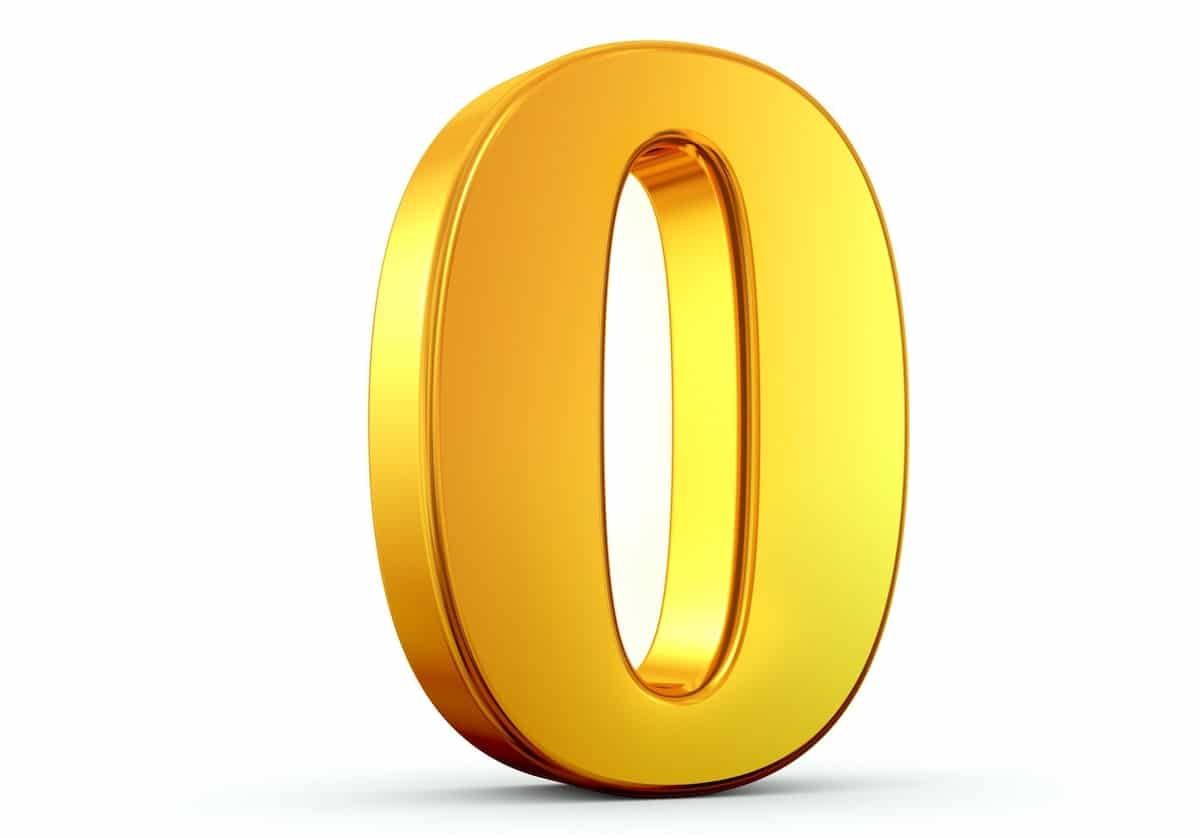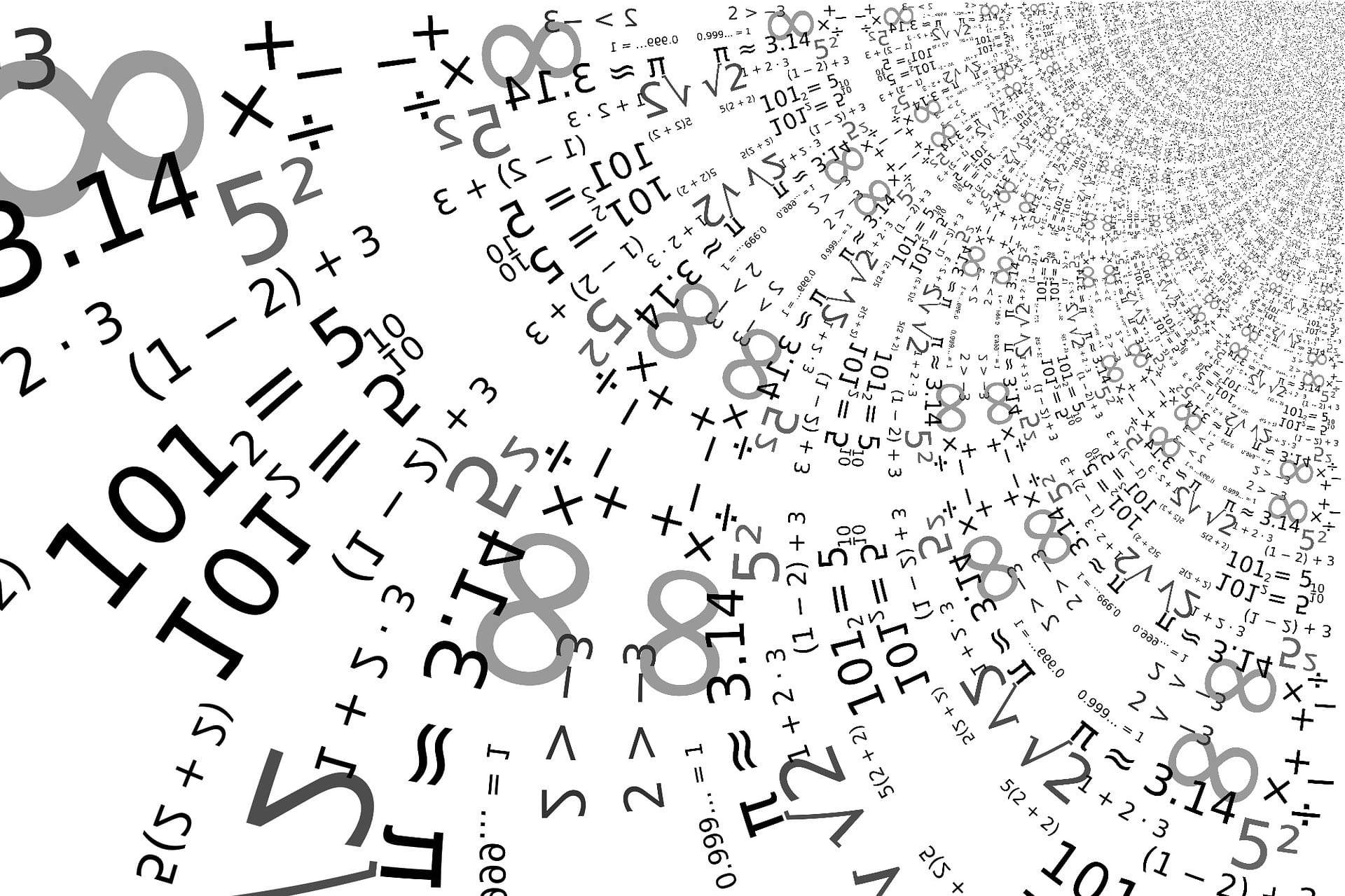
Gold number 0, 3D rendering of number zero made of gold with reflection isolated on white background.
The number zero, that figure that we use when we talk about the void or nothing. Do you know who introduced the idea of the number zero or why we use a number without value?
a matter of mind
The number zero has been used for a long time, even though it is a number without value, and it is used in all cultures. When we want to refer to the absence or lack of something we use the zero symbol. Words like "empty" or "nothing" are difficult to imagine and that makes it complex for our minds.
Our mind is capable of imagining an object in which there is nothing inside, an empty object inside, an object with zero products inside. But it is very difficult for us to think in the sense of "empty" or "lack of something" in a broader, absolute sense.
Maths
In the case of mathematics, we do understand its meaning and the importance it has when making calculations and using numbers.
Zero: from non-existence to its widespread use
Greece and Rome
Today we use zero in many operations and even use it as a synonym for "nothing", but we must remember that zero has not existed all our lives. For example, the ancient Romans or the ancient Greeks did not use zero. They were very advanced in mathematics or astrology calculating volumes or even predicting the exact place where the stars could be, but they did all this without zeros. If such important calculations could be done without using this symbol, why introduce it later and who introduced it?
The zero has Indian roots, and from there, it became used worldwide
If we want to know where this symbol that represents nothing comes from, we must go to India. We must look specifically at Buddhist and Jain philosophy. Although they did not call it "zero", they did use a word to designate that state of "nothing", "empty", "absence"... but which in Sanskrit was known as suyna y kha.
The mathematical sages of India used the word Sunya to refer to what we now know as "zero." But let's not think that this use passed from philosophy to mathematics in a matter of days. Moreover, the use of the word sunya began in a discipline that we have not yet discussed, grammar, and it was between the XNUMXth and XNUMXnd century BC. It was then that Panini and Pingala, grammar analysts of that time, used a symbol very similar to the zero that we know, although it was not a zero as a number, but as a letter. And they used it when they referred to something that did not appear.

India and China
It is not known exactly when it was first introduced because historical documents are missing and it is not clear. In addition, the Indian culture was found between different cultures such as the Chinese, Greek civilization and the peoples of Mesopotamia. That is to say, an important cultural mix and that also covers some 400 years of documentary doubts that do not make the clear beginning of the use of zero entirely clear.
For example, in China they used base 10, in which a zero appeared, but in this case it did not have that meaning of emptiness or nothing. Even so, they used calculation tables made up of several columns and the column that was empty was the zero column.
india and greece
The cultural exchange between India and Greece was the order of the day. Beyond the empire of Alexander the Great, right in the area of the border between India and Greece, the Indo-Greek kingdoms grew, that is, kingdoms in which both Greeks and Indians lived together. Two different cultures living together in one place. This meant that there was a cultural fusion between both cultures in all areas. Also, we are talking about two cultures that dominated trade and were great thinkers.
In this case, the Greeks provided the Indians with astronomical treatises in which a symbol similar to zero appeared, a symbol that the Indians had learned from the peoples of Mesopotamia. This symbol served at that time as a placeholder to indicate the numbers.
culture fusion
We can find, for example, the use of zero as a place marker in the Yavanajataka astronomical treatise, from the XNUMXrd century AD. The name of the treaty itself already teaches us again about the fusion between cultures. Why? This is an Indian document in which the word "yavana" means "Ionian" and that, in turn, means "Greek."

The mathematical zero
Until now we have seen that the zero symbol was used but as a grammatical symbol to indicate emptiness or absence of something, but not as a number, as we know it. When did you make this leap from grammar to numerology?
The first treatise in which we can find zero being used as a number is the Brahma-sphuta-siddhanta treatise. It is an algebra treatise written by the mathematician Brahmagupta in 628 AD. It is the first site in which zero is used as a number and in which it is explained how this symbol is used to make calculations with it. In this treatise, the zero adopts a totally aglebraic meaning.
Even so, the zero of then was not like the current one. For example, and according to Brahmagupta's treatise, if you divided a number by zero, the result that was obtained was a number, a very large value but an indeterminate amount. Therefore, it was a number, with an associated value.
from east to west

Again the ideas and wisdom of some peoples are transferred to others. In this case the word sunya is changed to sifr but it also serves to designate emptiness or absence, zero. In this case we must travel to the city of Baghdad, in the middle of the IX century AD. Khawarizmi Persian, better known to the medievals as Algorismus, he wrote the treatise On Indian Calculation based on Indian astronomical treatises. And it was precisely he who translated the word sunya by sifr. A different word for the same meaning.
And Leonardo Fibonacci, son of a Pisan customs officer, was the one who really spread these calculation techniques that came from the East because he traveled non-stop. In fact, it was this Italian who introduced the zero sign to European lands. In 1192 he wrote Liber Abaci, where he explains that nine numbers and a special symbol were used. The translation of the word sifr from Arabic to Latin, sephirum, introduced into Europe two concepts such as zero and digit.
Zero in modern times
As we have seen, zero has not always been an easy symbol to define. It hasn't even always been used as a number, but was initially used as a letter. And not only mathematicians but also philosophers and astrologers stand out in the study of this symbol.
Even so, it could be said that the use as such, as a number and as we know it today, did not arrive until the year 1657, at the hands of John Wallis. He was the first to use this number with a real (current) value of zero, that is, if it was added to any other number it did not change its value, it was still zero and did not contribute anything to the other value. It did not serve to modify the other number. This concept that we now see as normal and that we use on a regular basis, at that time was very difficult, it was not fully understood.
A simple definition gave meaning to the number zero
It was a few years later that the philosopher and mathematician George Boole put some sense to this number by saying that a set of objects has two limits. An upper limit that is known as the Universe and a lower limit that is called nothing. And it is to the lower limit, to nothing, to which the number zero is associated. This definition made it much easier to understand why adding a digit to zero would cause that digit to stay the same. It was at that time that people also realized the relationship that existed with the zero of the Indian treaties. The truth of Indian philosophy, which until then had been so difficult to interpret or understand.
Furthermore, following set theory, later great mathematicians such as Zermelo, Cantor or Von Neumann continued to study the value of zero in these sets and even what was known as the set without elements.
zero today
Currently, do we really know what the zero value means? Well, the answer, even if it seems like a lie to us, is that not at all. We will have understood it according to the model we choose. We can perfectly understand the value of zero in the field of set theory, in the mathematical field. What's more, we use it regularly and we do it without doubting this digit. However, in the philosophical field we have been left behind. In this regard, there is still a debate about the value of “nothing”.